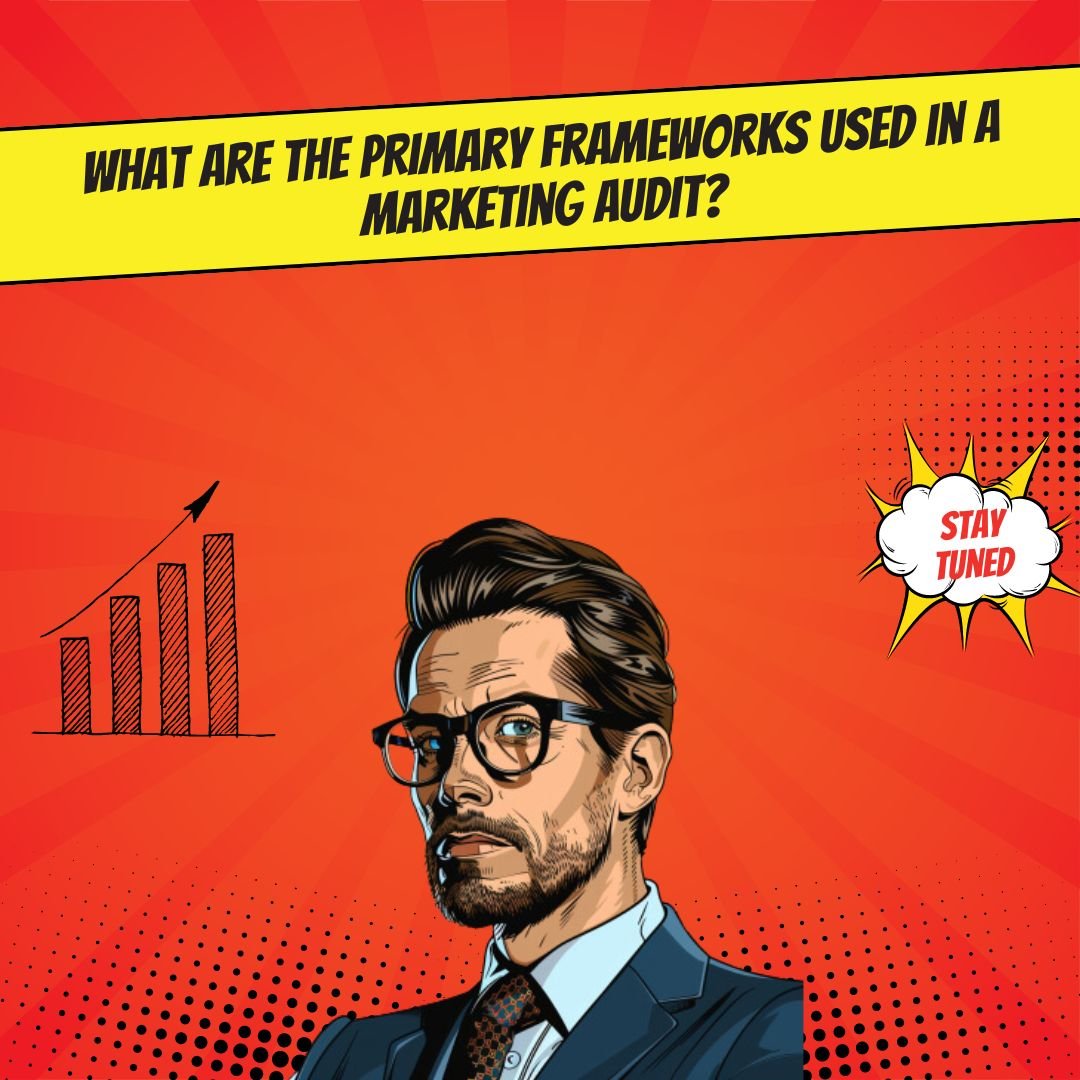Key Takeaways
✅ SWOT Analysis: Dive into the essence of SWOT analysis and uncover how examining your business's internal and external environment can pinpoint actionable areas for strategic enhancement. Did you know that utilizing SWOT can improve project success rates by 50% when properly executed?
✅ Comprehensive Elements: Integration of multiple analytical frameworks, including competitor and market research, presents a panoramic view of your marketing health. This approach could very well be the fulcrum for boosting your market visibility by a significant margin.
✅ Objective and Systematic Approach: Objective scrutiny coupled with a systematic blueprint ensures factual data leading to sound marketing maneuvers. Regularly conducting such audits can lead to a potential increase in marketing efficiency by up to 30% by recognizing and rectifying gaps swiftly.

Introduction
Have you ever felt like your marketing efforts are not hitting the mark or wondered where your strategy may be going astray? Marketing audits, including the formidable SWOT analysis, hold the key to unlocking the full potential of your game plan. In a world where marketing dynamics shift at the blink of an eye, understanding the frameworks of a marketing audit isn't just beneficial—it's essential. Engaging with these frameworks can mean the difference between soaring profits and unforeseen losses.
But why linger in the shadows of uncertainty? This exploration isn't just about laying the foundation; it's about constructing the skyscraper. Prepare to be introduced to modern trends, innovative perspectives, and solution-driven approaches that will steer your marketing ship towards untapped avenues of growth and heightened ROI. Stay tuned, as we pledge to unfold groundbreaking insights and actionable intelligence that could dramatically reshape your marketing strategy's landscape.
Top Statistics
| Statistic | Insight |
|---|---|
| Marketing Audit Frequency: Most companies conduct marketing audits annually or at six-month intervals. | Regular check-ups are fundamental to stay competitive and informed. Sticking to a routine schedule ensures your strategies remain relevant and responsive to the constantly changing market conditions. |
| Inbound/Outbound Conversion Rates: Aim for at least 35% of conversions coming from marketing. | Anchoring on this figure can guide you in fine-tuning strategies to hit or exceed industry standards. |
| Customer Retention: The focus on churn rate and repeat customer rate is crucial for assessing customer loyalty. | Understanding the loyalty dynamic can lead to strategies that not only acquire customers but also retain them in the long haul, which is usually more cost-effective than finding new ones. |
| Content Marketing: Assess your content library for the most engaging content types to support marketing programs. | Auditing your content's performance can reveal what truly resonates with your audience, allowing for more targeted and effective content production. |
| Budget and ROI Assessment: Tools like Bizible and Engagio ABM Analytics are used to ensure money is spent on high ROI campaigns. | With the right tools, marketing investments can become smarter, driving higher returns and more efficient use of your budget. |
Understanding the Purpose and Scope of a Marketing Audit
A marketing audit is a bit like a health check-up but for your business's marketing efforts. It's thorough, systematic, and leaves no stone unturned to make sure everything is on track. Imagine taking a magnifying glass to scrutinize the effectiveness of your marketing strategies and tactics. This inspection isn't about making new plans; it's about making sure the old ones still work well and are contributing positively to the company's success. If they aren't, it might be time to switch things up.
Dissecting the Marketing Audit Components
When we dive into a marketing audit, we tackle it in three broad parts. First, we gaze outward with an External Environment Analysis, eyeing up the other players in the game and the ground rules of the marketing playing field. Think of it as knowing the weather before you sail out. Following that, we zoom in with an Internal Environment Analysis, dissecting whether our marketing body is fit, or if some parts are lagging behind the others. Lastly, we arm ourselves with Data Collection Tools and Analytical Techniques that help us measure how well our marketing strategies are performing. It's like having a stat sheet for your team's performance.
The SWOT Analysis: A Marketing Compass
A SWOT analysis is the compass that can guide us through the often murky waters of marketing. By plotting strengths, weaknesses, opportunities, and threats on a straightforward chart, it's easier to figure out which direction to sail towards and what monsters we might face along the way. For a company, strengths could be their top-selling product, while weaknesses might be their outdated website. Perhaps an opportunity lies in an emerging market trend, yet a new regulatory change could pose a serious threat.
The Role of Competitor Research
Knowing your enemies - or rather, your competitors - is crucial. Competitor research is like scouting the other team before a big game. We're trying to understand their tactics, their strengths, and their weaknesses so we can find gaps in their game and capitalize on those. By knowing who we're up against, we can adjust our own strategies to stay one step ahead in the competitive landscape.

Delving into Market Analysis
With market analysis, we take our magnifying glass to the audience we are trying to win over. It's important to know who they are, what they need, and how they behave. This precise understanding helps us to tailor our strategies like a master tailor crafting a bespoke suit. We match our plays to their expectations, ensuring that our marketing game is as effective as possible.
Exploring Additional Tools and Techniques
In our marketing toolkit, we have a few more devices to fine-tune our strategies. The Marketing Mix reminds us to consider our product, the price it's offered at, the place it occupies in the market, and the promotion strategies we employ. Then there's the Gap Analysis, which flags the distances between where we are and where we want to be. A Content Audit pops the hood on our content marketing engine to check its performance and room for improvement. And let's not forget a KPI Review – it's like reading the scoreboard. It tells us what's working and what needs a new game plan, keeping our eyes on metrics like how many leads we're bringing in and turning into customers.
AI Marketing Engineers Recommendation
Recommendation 1: Embrace a Comprehensive SWOT Analysis with Real-Time Data Integration: Perform a SWOT Analysis that isn’t just a one-time activity. Utilize real-time data from sales figures, customer feedback, and market trends. This data-driven approach ensures that the analysis is rooted in the current market dynamics. For instance, incorporating live social media sentiment analysis can uncover strengths in brand perception or threats from emerging competitors.
Recommendation 2: Leverage PESTLE Analysis for a Macro-Environmental Perspective: Incorporate a PESTLE Analysis (Political, Economic, Social, Technological, Legal, and Environmental) to ensure a holistic understanding of the macro-environment where your business operates. With the rapid pace of technological change and fluctuating global trade regulations, it's vital to frequently review and update this framework. For example, with recent privacy laws such as GDPR and CCPA, understanding legal trends is essential for marketing strategy adjustments.
Recommendation 3: Utilize Marketing Funnel Analysis to Optimize Customer Journey: Employ a Marketing Funnel Analysis to identify drop-off points and opportunities within the customer journey. This practical tool helps to pinpoint areas where marketing efforts can be improved for better conversion rates. With the increase in omnichannel shopping experiences, it’s more important than ever to understand how each touchpoint contributes to customer acquisition and retention. Use funnel analytics software to track the effectiveness of different marketing channels and tactics.

Relevant Links
- Revolutionize Your Marketing with Advanced AI Technology
- Master Advanced SEO on Baidu and Boost Visibility in China
- Harness Analytics to Understand and Engage with China's Digital Consumers
- Maximize Your PPC Campaign Success in China with Crucial Performance Metrics
- Discover the Power of Performance Marketing in India
Conclusion
When it comes down to it, a marketing audit stands as a lighthouse, guiding businesses through the often murky waters of market competition and internal challenges. It's more than just a health check; it's a roadmap to strategic clarity. Reflecting on a marketing audit's core purpose, it's clear that this in-depth analysis, with its components of external and internal environment analysis, is essential for organizations striving to maintain relevance and effectiveness in their market endeavors.
Using the wisdom of tools like SWOT analysis, marketers can distill complex factors into actionable insights—recognizing strengths to capitalize on, understanding weaknesses to improve, spotting opportunities for growth, and being wary of threats that could sway their course. Equally important, competitor research sharpens an organization's competitive edge, while market analysis enriches the understanding of the ever-shifting sands of consumer preferences and market dynamics.
And let's not forget the other strategic instruments at our disposal: marketing mix assessments, gap analyses, content audits, and KPI reviews. These are not just buzzwords; they are the nuts and bolts of a robust marketing strategy that, when used correctly, can enhance how a business engages with its customers and competes in its space.
So, dear reader, armed with the knowledge of these frameworks and tools, the question remains: How will you harness the power of a marketing audit to revitalize your marketing landscape? Remember, the greatest risk isn't in scrutinizing your marketing efforts—it's in proceeding without ever questioning them.

FAQs
Question 1: What are the main elements of a marketing audit?
Answer: So, when you look into a marketing audit, think of it as checking under your business's hood. You've got three areas to peek at: a SWOT analysis, which is kinda like knowing what your superpowers and kryptonite are; competitor research, where you scope out what the other guys are up to; and market analysis, so you get the lay of the land where you're fighting the good fight.
Question 2: What is a SWOT analysis in the context of a marketing audit?
Answer: Imagine you're a detective looking for clues about how your business can win the game. A SWOT analysis is like your magnifying glass, helping you spot your own business's muscles and areas where you might trip, as well as golden opportunities and sneaky threats lurking around the corner.
Question 3: What is the role of competitor research in a marketing audit?
Answer: It's a bit like keeping an eye on your neighbor's garden to see how well their tomatoes are growing. Competitor research is diving into what other businesses offer, how much they're charging, and who's buying their stuff. By figuring this out, you can tweak your own strategies to stand out or do things even better.
Question 4: What is the purpose of a market analysis in a marketing audit?
Answer: You know how you plan a road trip by looking at a map? Well, market analysis is sort of like that map for your business. It gives you a bird's eye view of who's buying what, who's selling it, and where you might fit in that picture.
Question 5: What are the different types of marketing audits?
Answer: Marketing audits come in all flavors, just like ice cream. You've got a bunch to choose from depending on your taste—or in this case, your business needs—like checking your marketing's environment, your company vibes, or how you're doing with content, SEO, and facing off with the competition.
Question 6: How often should a marketing audit be conducted?
Answer: Think of it as an annual checkup, but for your marketing health. Every year is a good rule of thumb, although you can do it more often if you're in a fast-paced market or you just love staying ahead of the game.
Question 7: Who typically conducts a marketing audit?
Answer: Generally, you bring in the specialists, like those cool detectives you see in movies, but these are for marketing. They're not part of your team, so they can take a fresh, unbiased look at everything and tell you what's what.
Question 8: What are some common analytical tools used in marketing audits?
Answer: It's like having a utility belt of gadgets, each one does a special job. You've got your SWOT analysis tool, your spyglass for competitor analysis, and your survey and interview kit for diving deep into the data.
Question 9: What are the benefits of conducting a marketing audit?
Answer: After a good audit, it's like your business gets superpowers. Better performance, happier customers, more money in the bank—all because you figured out what works, what doesn't, and you calibrate accordingly.
Question 10: What are some common challenges encountered during a marketing audit?
Answer: Sometimes it's tough to find the right data, or there's just not enough cash or people to do what you need. And let's face it, change can be hard to swallow for your team. But hey, if you've got a plan and can collect the data smartly, you're halfway to winning.

Academic References
- HubSpot Blog. An Introduction to SWOT Analysis in Marketing. This reference outlines the structure and purpose of a SWOT analysis within the context of marketing, emphasizing its role in cataloging a brand's internal and external resources and challenges.
- LinkedIn. Marketing Performance: Leveraging SWOT Analysis. Presentation of the SWOT framework as a strategy to appraise the internal and external elements that have implications on marketing productivity, spotlighting the fundamental components of the methodology.
- Metranomic. SWOT Analysis in Marketing Audit: A Deep Dive. Highlights the significance of SWOT analysis as a critical initial maneuver in a marketing audit, dissecting its influence on forming marketing tactics.
- HubSpot Blog. Conducting a Competitive Analysis in Marketing. The article underlines the concept and processes involved in analyzing your market rivals, inspecting their strengths, strategies, and how they resonate with consumers.
- SmartBug Media. Exploring Competitive Analysis in SWOT. This source addresses the competitive analysis angle of SWOT, explicating the strategic discovery and examination of competitors’ marketing approaches within any given sector.
- HubSpot Blog. The Critical Role of Market Research in Marketing. An explanation of how market research plays an integral role in understanding customer perspectives and emerging trends, fundamentally aiding strategic planning.
- LinkedIn. The Marketing Mix: A Guide to the 4Ps. An elucidation on the marketing mix, detailing how the 4Ps (product, price, place, promotion) can be manipulated to impact the market effectively and realize business objectives.
- Metranomic. Content Audits: Measuring Content Marketing Success. Discusses the importance of a content audit, outlining the utilization of analytics to ascertain the impact of content and steer prospective content strategy.
- Metranomic. KPI Review within Marketing Audits. Emphasizes the importance of pinpointing appropriate key performance indicators (KPIs) during a marketing audit to monitor critical objectives such as the generation of potential clients and the conversion rates thereof.







